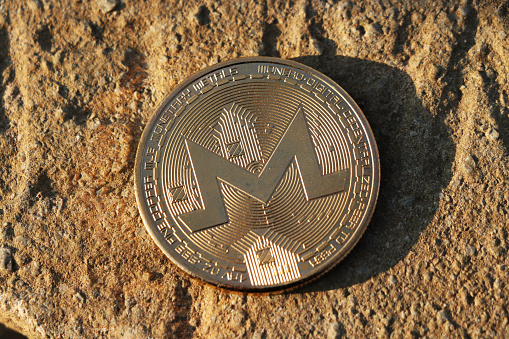Vitalik Buterin, the co-founder of [Ethereum](https://www.techopedia.com/definition/32571/ethereum-cryptocurrency), gave readers clues about the future of Ethereum in a blog post as he weighed the pros and cons that “enshrining” brings to the [layer one](https://www.techopedia.com/definition/layer-1-in-blockchain) (L1) protocol.But what does ‘enshrining’ mean, and how will it affect Ethereum’s roadmap? Let’s find out.What Does Enshrining Mean? Enshrining refers to natively implementing the logic of a feature in the core code of an L1 protocol.New features that have been enshrined become “protocol features.” In a [blog post](https://vitalik.eth.limo/general/2023/09/30/enshrinement.html) published on 30 September 2023, [Buterin](https://www.techopedia.com/definition/vitalik-buterin) spoke about Ethereum’s original “minimal-enshrinement philosophy.” This philosophy aims to keep the base Ethereum L1 layer “as simple as possible” while leaning on off-chain solutions such as [rollups](https://www.techopedia.com/definition/layer-two-l2) for extra functionalities and new features.Buterin now thinks that a slight tweak in the minimal-enshrinement philosophy may be warranted.Let’s talk about the minimal-enshrinement philosophy and the pros and cons of enshrinement in detail below.The Future of Ethereum: Minimal Enshrinement Philosophy Ethereum’s core developers have always tried to keep things clean, simple, and secure at the base layer.The onus was put on the rest of the community to build new features on top of the [protocol](https://www.techopedia.com/definition/4528/protocol#:~:text=A%20protocol%20is%20a%20set%20of%20rules%20and%20guidelines%20for%20communicating%20data.).
In the words of Buterin, Ethereum was created to “just be a virtual machine, and verifying a block would just be a single virtual machine call.” Among the key advantages of this approach was that a hard fork could easily be described as a single transaction to the block processor contract.Other advantages of a minimalist structure include flexibility in meeting different user needs and avoiding software bloat.However, with time, the community is realizing that enshrining features may allow the future of Ethereum to see improvements such as lower gas fees, better security, and lower [centralization](https://www.techopedia.com/definition/decentralization) risks.Buterin Considers Enshrining ERC-4337 In 2023, we have heard about an Ethereum feature called [account abstraction or ERC-4337](https://eips.ethereum.org/EIPS/eip-4337).Account abstraction brings in new functionality, such as smart contract [wallets](https://www.techopedia.com/definition/cryptocurrency-wallet) and payment of Ethereum [gas fees](https://www.techopedia.com/definition/gas-fee-ethereum#:~:text=Gas%20fees%20are%20paid%20in,designed%20to%20help%20Ethereum%20scale.) in [ERC-20 tokens](https://www.techopedia.com/definition/erc-20#:~:text=projects%20and%20applications.-,ERC%2D20%20Tokens,(DeFi)%20ecosystem%20of%20Ethereum.) to Ethereum users.These user-friendly features are widely expected to support crypto and wallet adoption.Account abstraction saw multiple revisions over the years.It evolved from an Ethereum improvement proposal called EIP-86 to its final form, ERC-4337.
As an ERC, account abstraction does not require a [hard fork](https://www.techopedia.com/definition/bitcoin-fork#:~:text=Hard%20Fork%20%E2%80%93%20A%20hard%20fork,mirror%20it%20in%20many%20ways.) and technically exists “outside the Ethereum protocol.” Now, Buterin sees merit in enshrining some parts of ERC-4337.As a part of the L1 protocol, users will see lower gas fees when using enshrined account abstraction features due to lower storage costs.
Buterin added that enshrining ERC-4337 will replace its entry point contract – a vulnerability that attackers could exploit to steal funds – with an in-protocol functionality.Enshrined Proposer-Builder Separation (PBS) Helps Solve Ethereum Centralization Risks Enshrined proposer-builder separation (PBS) is a good example of how enshrining promotes decentralization and creates a trustless system.
Let’s talk about the basics first.Proposers are validators who sell their block production rights to players known as builders who specialize in extracting the [maximal extractable value (MEV)](https://www.techopedia.com/definition/maximal-extractable-value-mev#:~:text=What%20is%20Maximal%20Extractable%20Value,of%20transactions%20in%20a%20block.) from a block.The proposer earns MEV rewards in the process, while the block builder keeps a portion of the MEV rewards for themselves.Currently, validators use a third-party solution by Flashbots called [mev-boost](https://github.com/flashbots/mev-boost) to access a marketplace of builders.
The solution is so popular that it accounts for 90% of Ethereum blocks produced.In order to derisk the protocol from mev-boost centralization, enshrined PBS is being advocated, which will see PBS implemented into the consensus layer of the Ethereum protocol.An in-protocol builder marketplace will rid the network of centralized parties called relays that act as auctioneers in the mev-boost marketplace.Buterin Preaches Middle Ground Buterin is taking a flexible approach toward enshrinement.
He remains keen on enshrining private [mempools](https://www.techopedia.com/definition/mempool#:~:text=Mempool%20or%20memory%20pool%20refers,finalized%20in%20the%20upcoming%20block.) to help users mitigate issues like frontrunning.Like mev-boost, private mempool solutions are only offered by third-party providers, which has raised concerns about centralization and trust.While an enshrined private mempool could solve this problem, Buterin took a pragmatic approach and said, “enshrining anti-frontrunning at layer 1 seems like a difficult proposition, at least until delay encrypted is perfected or there is some other technological breakthrough.” Here are some lessons Buterin shared in his blog post: – Enshrining features can help avoid centralization risks – It is best to avoid enshrining features if it weakens the trust model of Ethereum and makes Ethereum more “subjective” – Enshrining too much can over-complicate the protocol – Enshrining can backfire in the long term when the enshrined features are not used by as many users as anticipated Buterin’s Guide: When and When Not to Enshrine |Abstract more to/when:||Enshrine more to:| |Avoid over-extending protocol trust and governance load||Deal with high fixed costs| |Support diverse user needs||Make protocol-empowerment features stronger| |Uncertain about future needs||Reduce code bug risk for user| |Reduce protocol complexity||Avoid higher-level centralization risks| The Bottom Line While Ethereum’s original plan may have been to play it safe, Buterin’s blog indicates that the future of Ethereum is not set in stone.Buterin has shown an inclination to enshrine features in favorable instances.
He concluded that blockchains are “social systems” that have rationales for enshrining certain features.For the full post by Buterin, [visit his blog](https://vitalik.eth.limo/general/2023/09/30/enshrinement.html)..
